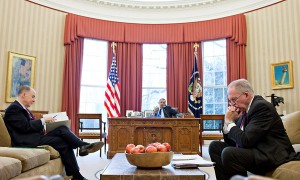Near Daily Drone Attacks Continue in Pakistan
John Brennan must feel that Pakistan’s morale has only improved marginally, because what was an average of almost one drone strike a day has now fallen to about a half drone strike a day. Three successive days of strikes (with a total death toll of 27) have brought to eight the number of strikes in the two weeks since last-minute negotiations on the reopening of supply routes through Pakistan broke down and Brennan decided to rain terror down on Pakistan once again.
Today’s attack killed 15 in Mir Ali in North Waziristan. In the AFP story carried in Dawn, we have no less than two officials confirming that those killed were “militants” even though their nationalities aren’t known:
“Fifteen militants were killed in a dawn strike on a compound. The bodies of those killed were unable to be identified,” a security official in Miramshah told AFP.
He said there were reports that some foreigners had been killed but these were unable to be confirmed.
A security official in Peshawar confirmed the attack and said 15 militants were killed.
“We have received reports that 15 militants have been killed in a drone strike but at this moment we don’t know about their nationalities,” the official said.
“We are also unclear about the number of the militants who were present in the compound at the time of attack.” The latest attack came amid an uptick in drone strikes.
Coverage of this strike in the Express Tribune is quite interesting. It has near the beginning the usual quote of a local official asserting those killed were militants, but includes an admission that “locals” were among those killed:
A security official said that the compound was targeted in the Esokhel area of Mir Ali and that locals along with foreign militants were killed. “I don’t know how many foreign militants were killed but we are sure that foreigners were among the dead,” said an official of the security force.
But then we get to a tribesman being quoted, and what he has to say is revealing:
According to a tribesman who was an eyewitness, the compound was razed to the ground after the attack. “I didn’t go near the house, as I avoid going near places where drone strikes take place,” he added.
Why would local tribesmen “avoid going near places where drone strikes take place”? Why that’s because the US intentionally targets first responders at drone strikes:
But research by the Bureau has found that since Obama took office three years ago, between 282 and 535 civilians have been credibly reported as killed including more than 60 children. A three month investigation including eye witness reports has found evidence that at least 50 civilians were killed in follow-up strikes when they had gone to help victims. More than 20 civilians have also been attacked in deliberate strikes on funerals and mourners. The tactics have been condemned by leading legal experts.
Who else targets first responders? Well, there are terrorists in Iraq who do that: Read more →

